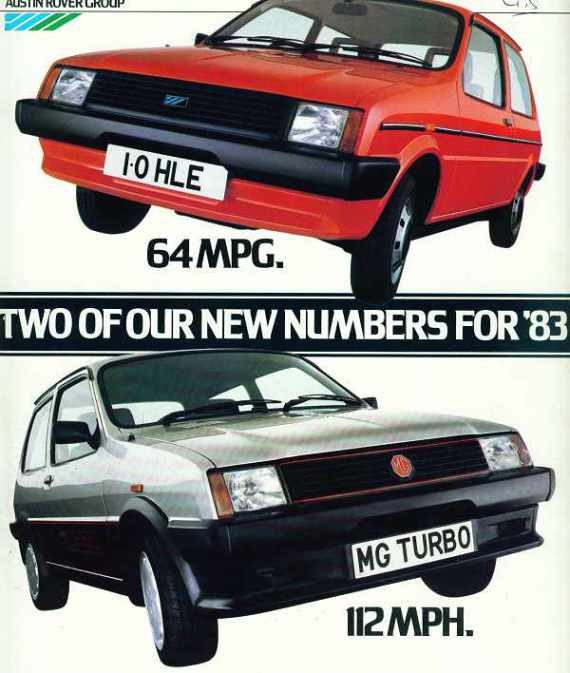Because since 1983, just under 22.000 have been made. That lack of success was mainly due to two things: The hard core MG enthusiasts thought the thing was just a fake MG. A bleak, unimaginative example of BMC badge engineering. And the quality left something to be desired for 1986.
But with that first argument 'the market' did not do justice to the little poison frog
The development and re-engineering of the MG Metro 1300 made the car really a different car than 'a Metrootje'. The MG Metro Turbo had a huge set of changes that made it quite unique. It was an MG that was faster and more lively than the MGB ever was. But even with all that effort, the MG remained in its profile nothing more than… A little Metro. And that was more than disturbing for the classic MG enthusiasts.
In addition, practice proved that the build quality of the cars was quite variable
The cautious trend towards improvement was very cautiously described as 'from very bad to acceptable' in the first few years and it wasn't until 1986 that the quality of the cars got better. But if all went well, the cars' performance was generally good and competitive, but limited by the A-Series engine with its four-speed gearbox. The whole concept screamed for an extra gear.
A gear too little
That extra acceleration was needed for the 1.300 cc block that was specified after the extensive help from Lotus Engineering for 93 pk, but that in practice often delivered almost 100 pk. The engine was previously considerably reinforced with parts and materials that were common for competition engines such as the cylinder head, the crankshaft, the sodium-filled exhaust valves, etc. This resulted in a fairly unique engine that unfortunately did not look that much different once in the front then the standard block. The power of the MG Metro Turbo, partly generated by the Garret T3 turbo, was the reason that quite a few gearboxes died.
Line cousins
To keep the damage under control / prevent MG devised an electronically controlled turbo pressure control. And with that MG was a forerunner in the field of all electronic cousins that modern (turbo) cars have on board. The roadworthy but 830 kilo weighing Metro MG was given up in terms of top speed for a smooth, but not horrifying top speed of 169 km / h. To curb that speed, the MG had an energized braking system with front discs, behind drums. The suspension was provided by a simplified version of the Hydragas suspension.
In his time
It is interesting that critical car journalists at the time reported that the Metro MG was a nice car in appearance, but that the performance was disappointing. But the 'Turbo' designation on the flanks was seen as pretty cool and the price was described in an article as 'not that bad'.
Very rust sensitive
In terms of bodywork, the rust sensitivity of these anabolic Metros was once described as 'Ice that melts in the summer sun'. And that makes them rare now. There is no interest in ordinary Subways. The interest for the MG Metro Turbo is moderate at best.
A lot has been done about such an MG-Turbo block. But it is certainly not a spectacle under the hood







Nice to read an article about the MG Metro Turbo again.
Compared to his contemporaries such as the Ford Fiesta and Opel Corsa, it wasn't such a bad design. Very spacious inside and in the sporty MG version also comfortable thanks to the hydragas suspension. The 4 gearbox was indeed the weak point, but due to lower gearing, the engine ran at 120 KM just not a 4000 speed.
When I drive my contemporary metro turbo in 2018, I get the same feeling I had in the late 80s with my metro turbo at the time, throwing and throwing a bit while being blown by all kinds of modern small cars ...
Fancy a Dolf ride?
Hi Johan, As the owner of a Russian sidecar combination, I never hear anything or anyone off. Because I know from experience that it can all be much 'worse'. But as much as I like my Russian, I'm at peace with the fact that the rest of the world doesn't always agree.
But I don't think we can ignore the fact that the Metros weren't the pinnacle of British automotive construction. And then they also had to compete against the legacy of the legendary Mini. That only makes the survivors more fun for me. And I think the survivors have completely deserved their fancier status. I'll email you about this.
Yours faithfully,
Dolf Peeters
What a pity that the metro is again canceled, and that while it is a very potential car.
I've owned a subway (non turbo) for over 11 years, and it's always a pleasure to drive.
No, 64pk is not much, but it also weighs only 700kilo, still has a large oversized 4 pod claws on the front axles.
Although they are quite scarce in the Netherlands, there is still a fairly large fan base for the metro in the UK.
Dear Rolf, Maarten, Johan,
As a former employee of an Austin Rover garage, here in Belgium we also had the necessary customers to buy one, that went from young guys to the more well-off who already had the mileage.
It reminds me that I am looking for red belts and seats with the famous red color, unfortunately not to be found here. (May you know there?
chris.sandy@telenet.be